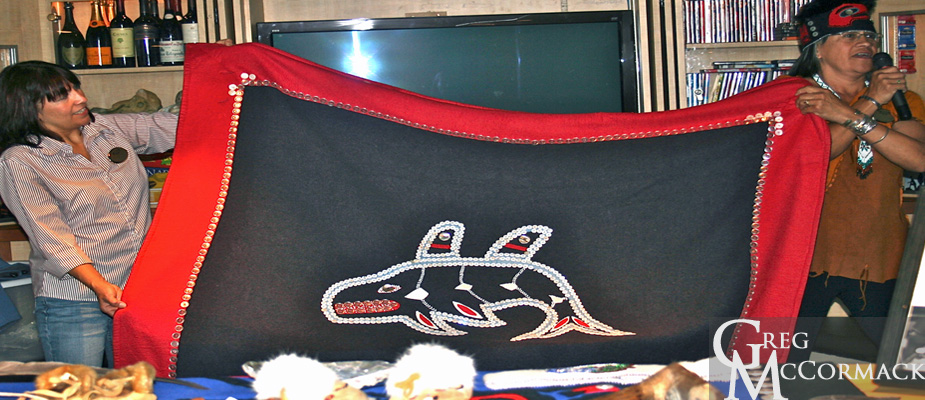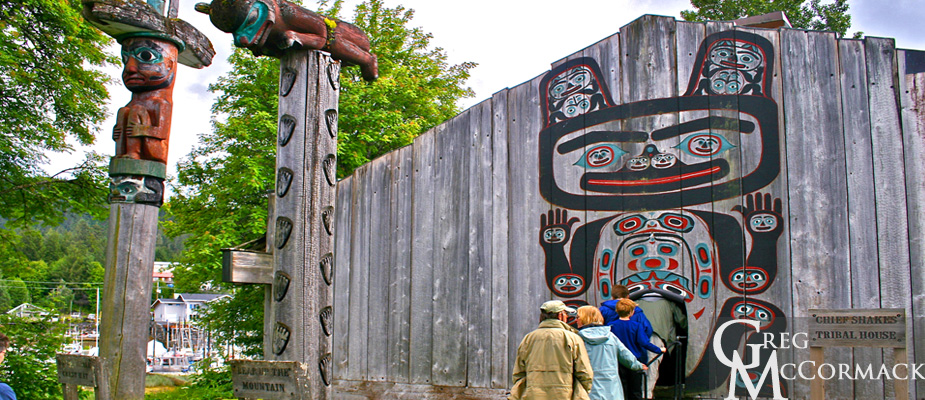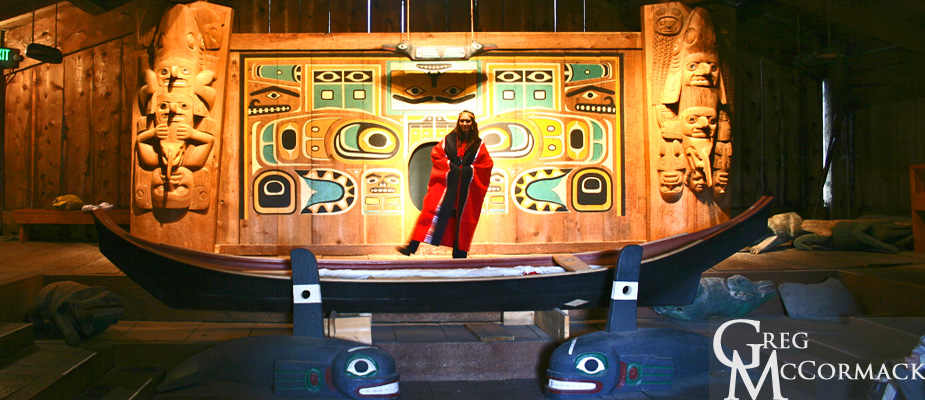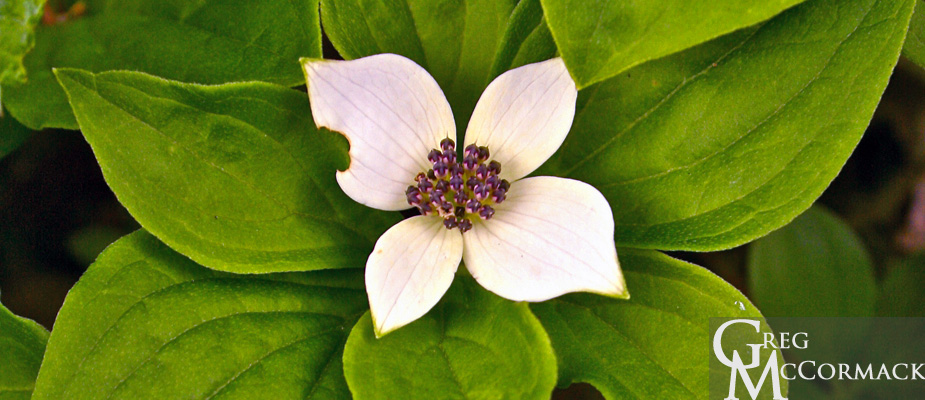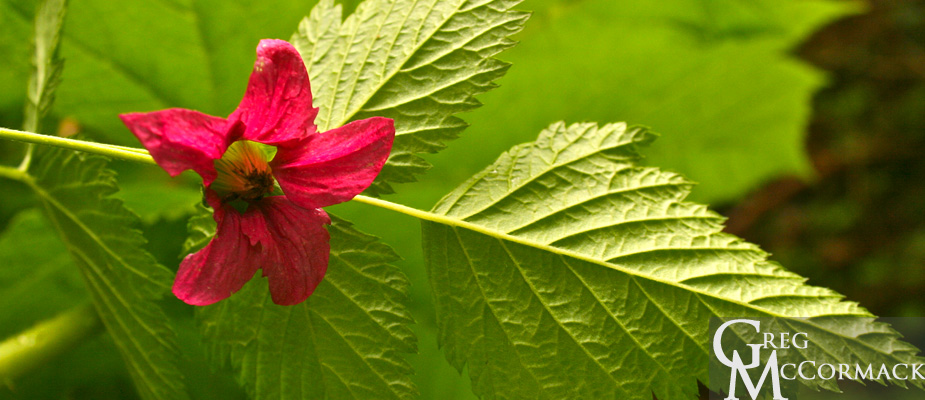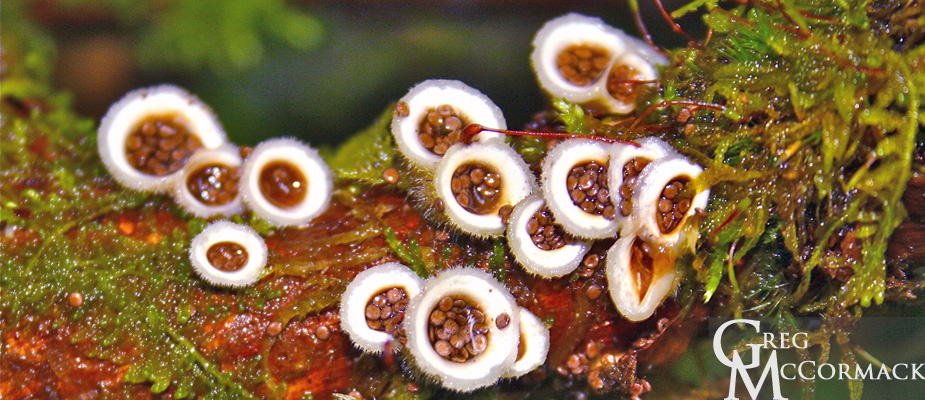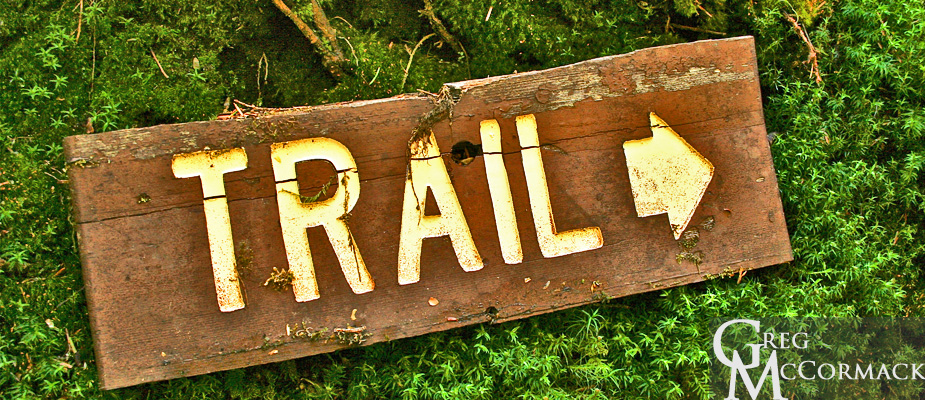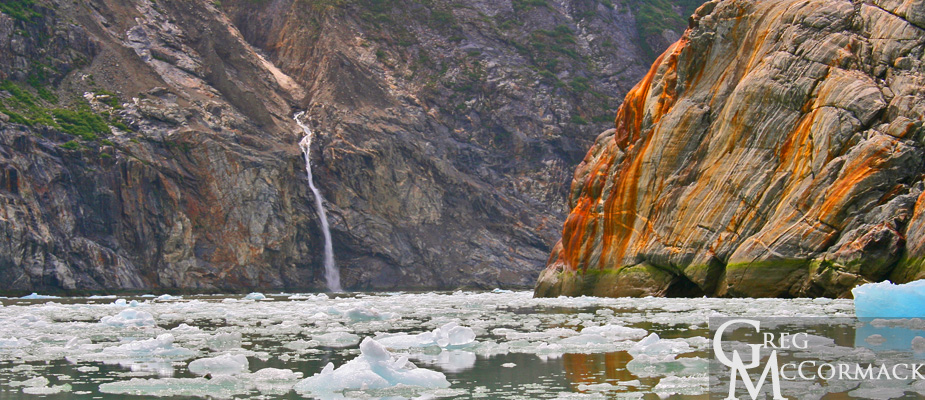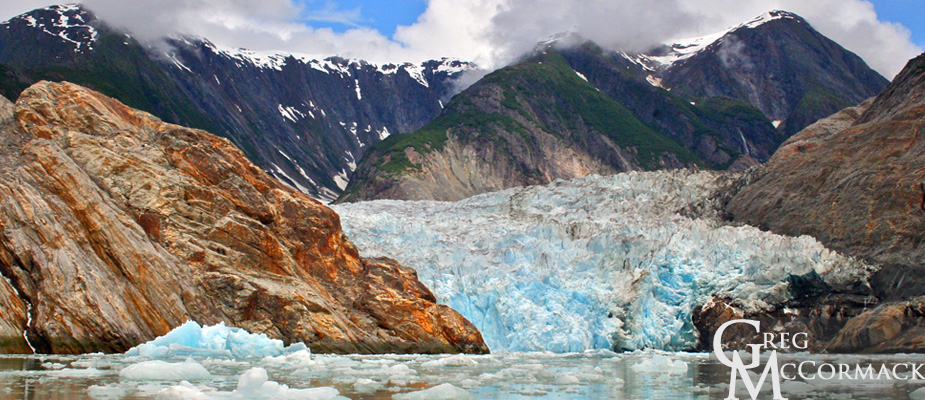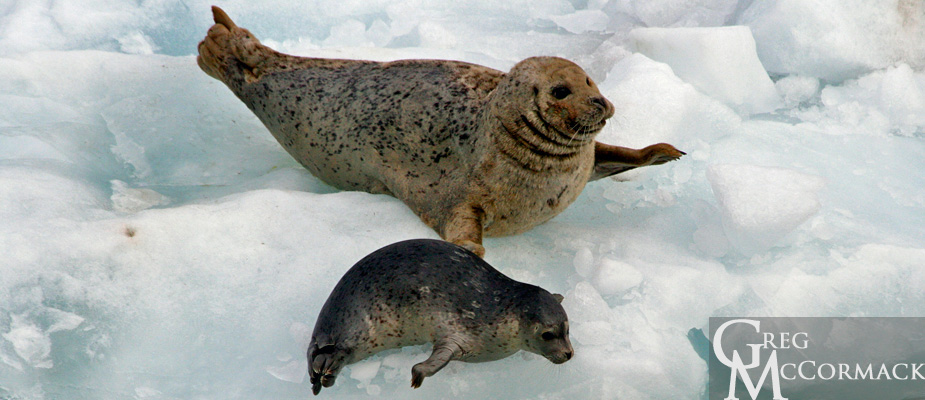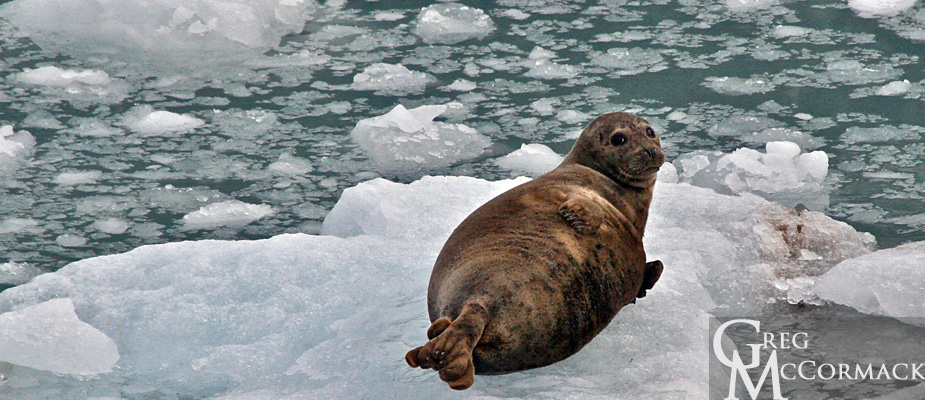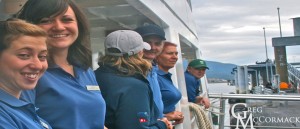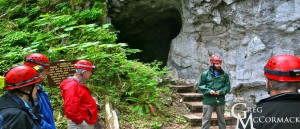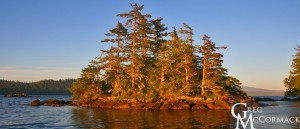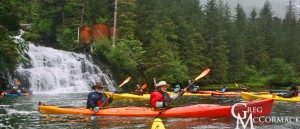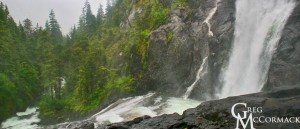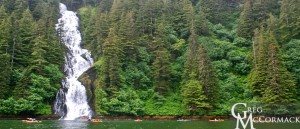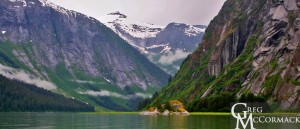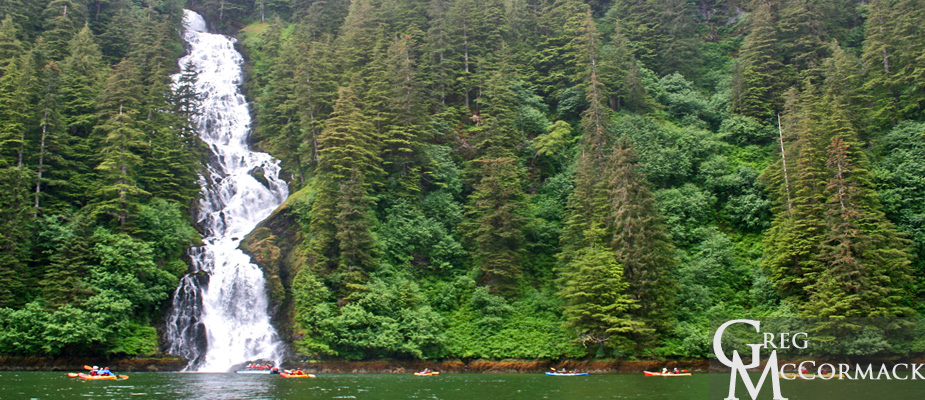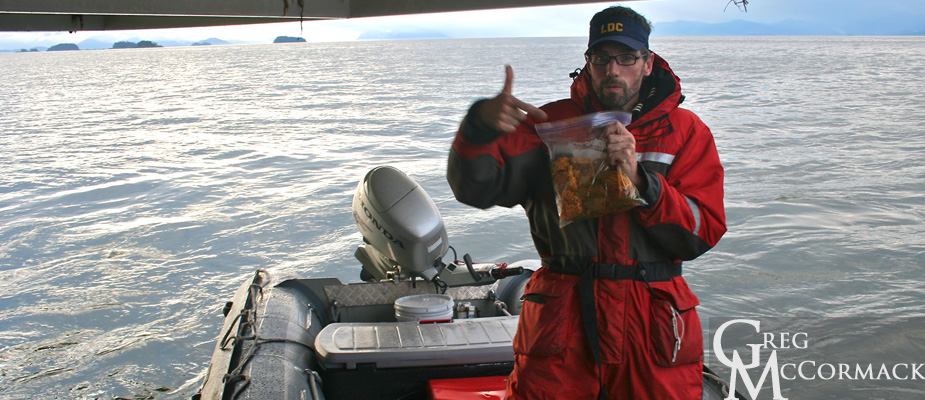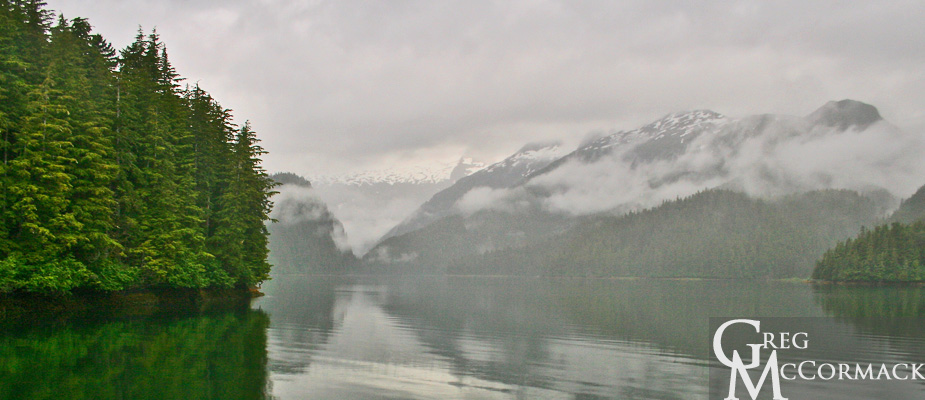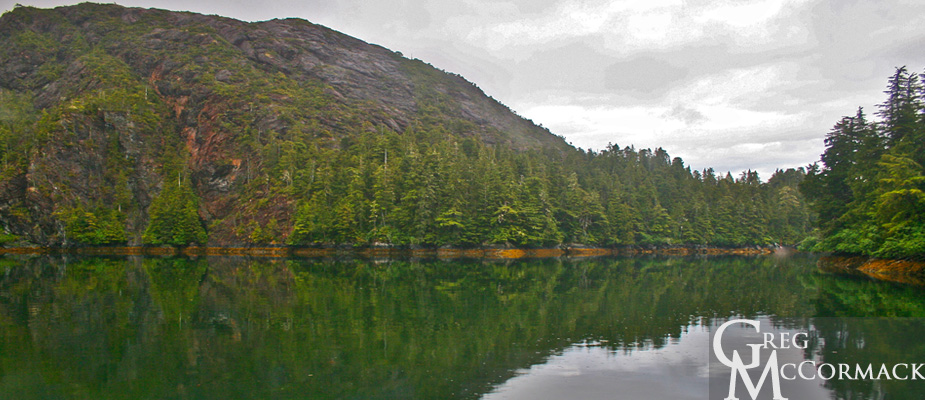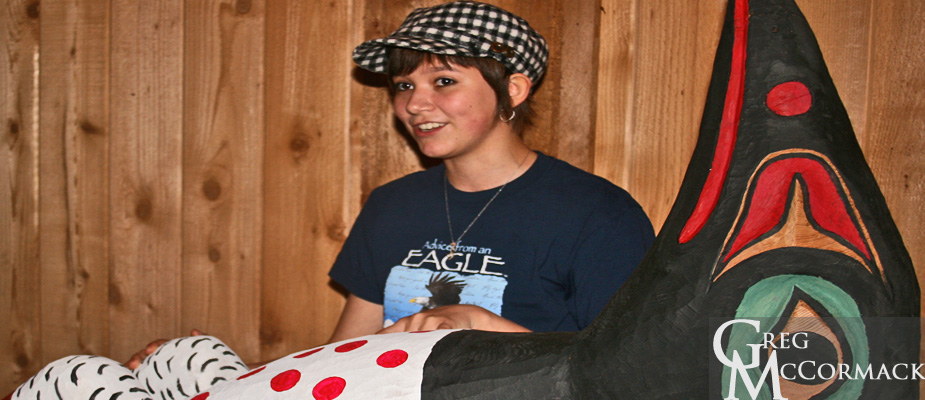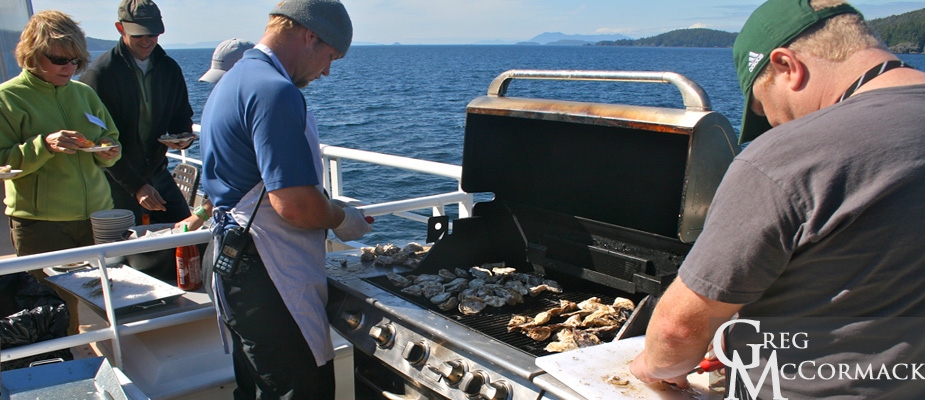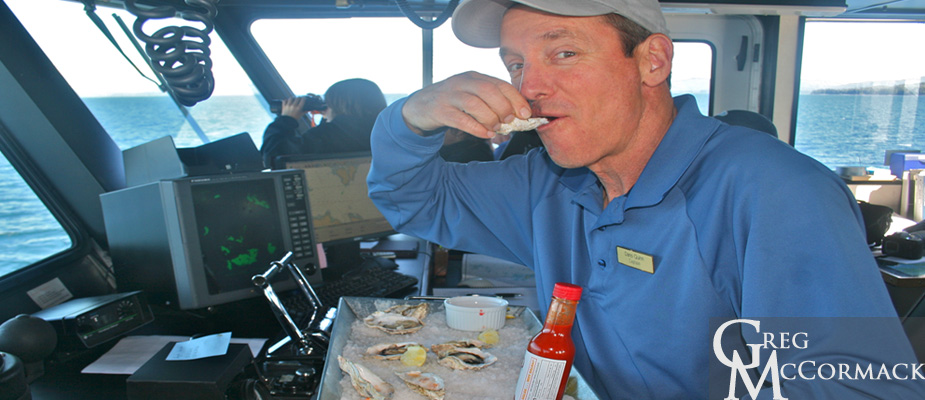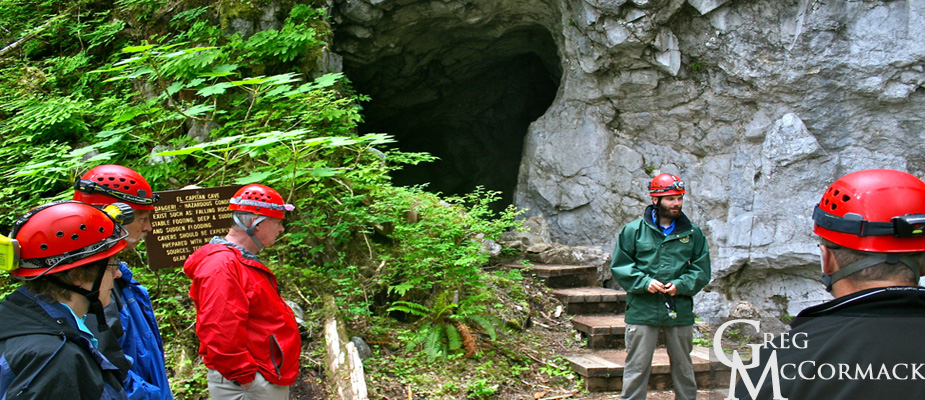Search results
Wednesday | July 6
September 14, 2011 by admin
Filed under InnerSea Discoveries
“We abuse land because we regard it as a commodity belonging to us. When we see land as a community to which we belong, we may begin to use it with love and respect.” –Aldo Leopold
Onboard the vessel right after breakfast, we have a couple of Tlingit guests give an informal lecture with songs and a “show and tell” session in the lounge.
We learn many fascinating things about the dynamic Tlingit culture that has thrived here for a very long time.
This is followed by excursions to see petroglyphs, a performance at Chief Shakes lodge and jet boat tours up the diverse Stikine River.
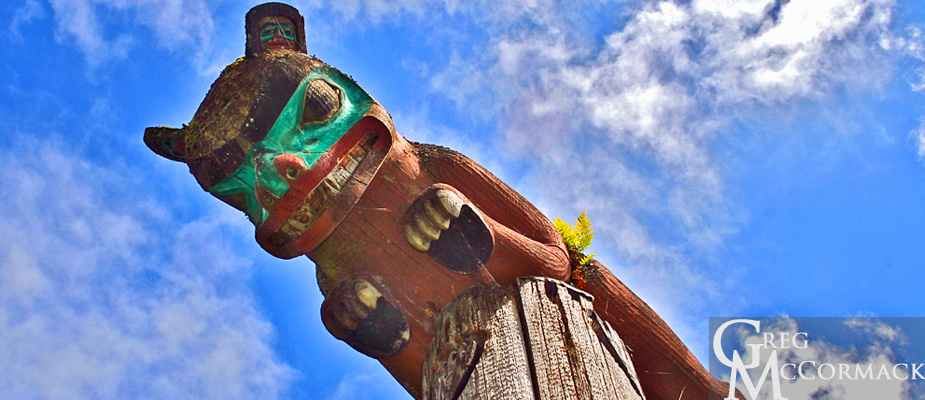
Many folks make the trip to the Nolan Center and purchase natural and cultural history books in the bookstore, among other gift items.
Tuesday | July 5
September 14, 2011 by admin
Filed under InnerSea Discoveries
“O’ Earth, What changes hast thou seen?” –Alfred Lord Tennyson
We offer several activities for guests, including paddle boarding, kayaking and a couple of different hikes, including all-day and half-day hikes. I co-lead a kayak along the lee side of Ruth Island and later a half-day hike up the Patterson River. There are lots of beautiful, verdant plants to point-out to my fellow adventure-seekers.
We see bunchberry dogwood, false lily-of-the-valley, skunk cabbage, salmonberry, several species of fungus and many other herbs, shrubs and trees.
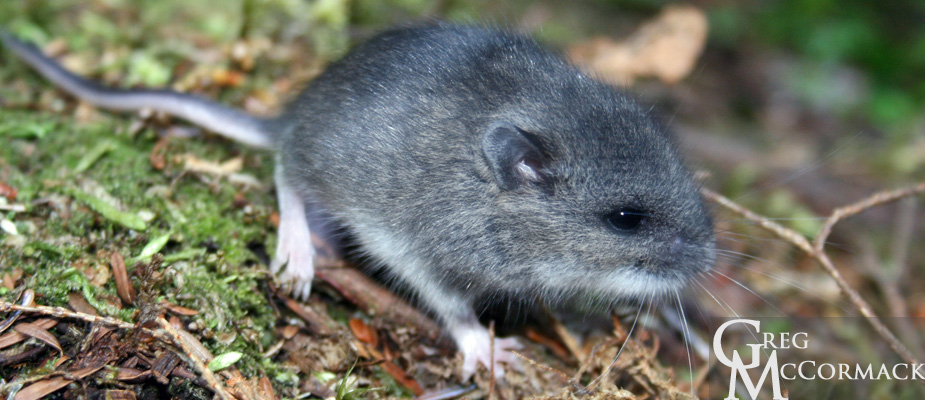
Deer Mouse
Our hike is along ATV trails. We see evidence of old cabins and (hard-to-believe) some dung from cows! Apparently this is not part of Tongass National Forest. Our scatological discovery-of-the-day were moose pellets. I pick-up a hand-full and interpret the fascinating life history of this huge Cervid species: “The moose get quite large, males up to 1600 pounds and females up to 1300 pounds.”
“Moose are herbivorous, feeding on deciduous trees such as willow and birch. Moose will eat as much as 40 pounds of willow leaves in a day, enabling the growth of huge antlers.”
“Antlers are shed in the late fall, early winter. Males are solitary except for the rut. The rut is in the fall. This is when the testosterone in the males is at its peak. Males battle it out for access to females. Subordinate male bulls are sometimes referred to as “sneaker” males for sneaking into a harem while the dominant male is off fighting another male.”
We enjoy the riparian corridor adjacent to the Patterson River. It would take all day to follow the trail up to the Patterson Glacier.
Rumor has it that our company dropped-off several kayaks by helicopter on the lakeshore just a couple of miles from the face of the glacier. One group this summer has made it all the way up with the owner of the company leading the intrepid hikers. It was a strenuous adventure of over 10 miles.
Back aboard the WND, we traverse the famous Wrangell Narrows that separates Mitkof and Kupreanof Islands. Anchorage is just a few miles from Wrangell, which lies near the 17-mile wide delta of the mighty Stikine River.
Sunday | July 3rd
September 14, 2011 by admin
Filed under InnerSea Discoveries
“Never before this had I been embosomed in scenery so hopelessly beyond description. Tracing shining ways through fjord and sound, past forests and waterfall, islands and mountains and far azure headlands, it seems as if surely we must at length have reached the very paradise of the poets, the abode of the blessed.” –John Muir
At 06:00 the anchor is lifted and the Wilderness Discoverer begins its journey up the 30-mile long Tracy Arm fiord. I like to tell folks that we are all taking a trip back 15,000 years to the Pleistocene Epoch to see what much of the northern latitudes on Earth were like at the southernmost extent of the Wisconsin era glaciation. Basically a person could strap on some skis and continue on ice from Tracy Arm south to present-day Olympia, Washington and head then head east to Cape Cod, Massachusetts.
Tracy Arm—Fords Terror was designated a wilderness area in 1980 with President Jimmy Carter’s passage of the Alaska National Interest Lands Conservation Act (ANILCA). Prior to this it had been designated a National Forest Scenic Area in 1960 and 10 years later a Wilderness Study Area in recognition of the opportunities for solitude and its dramatic beauty.
It was President Lyndon Johnson that signed the Wilderness Act in September of 1964.
It states:
“In order to assure that an increasing population, accompanied by expanding settlement and growing mechanization, does not occupy and modify all areas within the United States and its possessions, leaving no lands designated for preservation and protection in their natural condition, it is hereby declared to be the policy of the Congress to secure for the American people of present and future generations the benefits of an enduring resource of wilderness.”
Everybody seems to appreciate being a visitor to this wilderness as they are out on decks to soak-in the scenery, admire ice-bers and to look for wildlife.
We offer small boat tours. Adventure-seekers enjoy close-up views of the Sawyer Glacier calving ice and the dramatic mountain scenery. I point out the waterfall, located 1.5 miles away from the face of the Sawyer Glacier. When I first started leading folks here in the early to mid-90’s, the glacier was close to this cataract.
People are amazed to see how far it has receded and how much thinning of the glacier has taken place. The barren rock and trim-line of vegetation high up above the recently de-glaciated rubble landscape are reminders of a changing climate.
Harbor seals are spotted on the ice “growlers” or brash ice. Some are seen with pups that were recently born. It takes 6-weeks before pups are weaned off of the mothers milk and are on their own to search for food.
Arctic terns ply the waters, catching schooling fish for their developing young that await in the rock gardens bordering the fiord. Gulls fly back an forth in front of the glacier waiting for the next calving that will churn-up small fish and shrimp for easy-pickings.
Our afternoon and evening is spent looking for and watching whales in Frederick Sound.
Saturday | July 2
September 14, 2011 by admin
Filed under InnerSea Discoveries
“If there is magic on this planet, it is contained in water.” –Loren Eisely
The M/V Wilderness Discoverer lifts anchor and motors north through Gastineau Channel and docks beneath the rising peaks of Mount Roberts and Mount Juneau. All (departing passenger) luggage is taken off of the vessel and carried up the dock ramp to the waiting buses.
A fond farewell takes place between crew and guests as the latter disembark to hug and shake hands with their favorite crew members on the dock. Great memories and sad goodbyes!
The excitement for the morning is when I crashed a fully-loaded, heavy rolling cart on the ramp leading down to the pier. Luckily none of the eggs in the 13-dozen box broke.
Note to self: Do not use a cart that lacks hand brakes when the tide is low. All of the carts but one has a hand brake. Kristen helps me re-load and we get back to transporting stores from truck to ship.
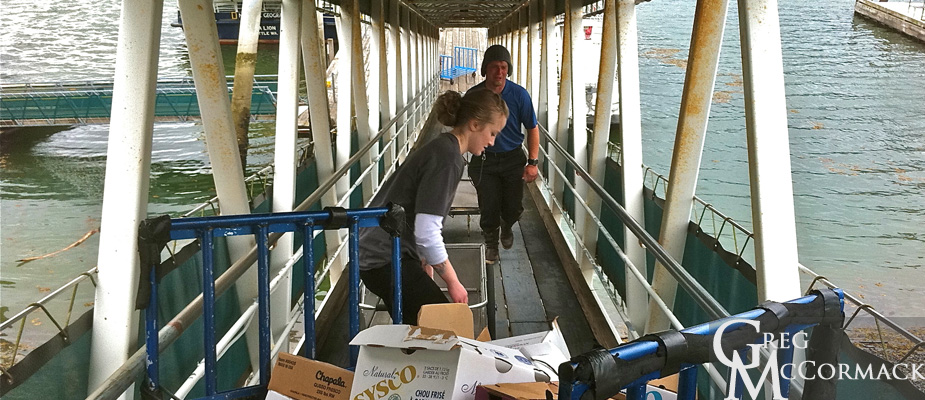
All available hands on the ships crew prepare for a new group of passengers that will board the vessel at 16:30 hours. All decks are swabbed, port holes washed, sheets changed, cabins and heads cleaned, dirty laundry and garbage hauled off ship, and galley stores stowed.
After our welcome aboard orientation meetings with the deck, engineering, hotel and expedition leads, the M/V Wilderness Discoverer pulls away from the Juneau dock and heads south in Gastineau Channel. We spot some Humpback Whales feeding just outside of the Taku Inlet and enjoy the sunset on the outside decks.
Our destination for tomorrow will be the one of three spectacular fiords in the Tracy Arm—Fords Terror Wilderness, about 46 miles south of Juneau. The area encompasses close to 700,000 acres of rugged Coast Range mountains bordering Holkham Bay, the spot where we will be anchoring tonight.
The three dramatic fiords are Endicott Arm, Fords Terror and Tracy Arm, all of which trend west-to-east through the Coast Mountain Range. The three tidewater glaciers drop down from the Stikine Icefield and regularly calve ice bergs into the ocean.
Where is gMack now? InnerSea Discoveries Expedition Week 9
It has been an exciting week on the InnerSea Discoveries Expedition Click Links Below to read daily updates from Week 9 of the Trip:
June 25 – July 1, 2011
Saturday | June 25th
Ketchikan
Sunday | June 26th
El Capitan Passage, Caves and the Oyster Pick-up
Monday | June 27th
Klawock and Sea Otter Sound
Tuesday | June 28th
Little Port Walter
Wednesday | June 29th
Patterson Bay: Scat and Cataracts!
Frederick Sound
Friday | July 1st
The Green Flush and an Ice Swim
Thursday | June 30th
September 10, 2011 by admin
Filed under InnerSea Discoveries
Frederick Sound
Last night we motored into this most stunning of bays on Baranof Island. The majority of guests decide to kayak up the fiord to the splendid waterfall that seems to fall out of the sky down a precipice covered in conifers. Just beyond at the head of the bay on about two hundred acres of mudflats and meadows, a grizzly bear feeds on grasses. Kayakers line themselves along the edge of the river opposite the bear. A bald eagle is perched on a stump, providing another photographic opportunity.
What is the difference between a BROWN bear and a GRIZZLY bear, you may ask? They are the same species, Ursus arctos. The coastal grizzly is called a brown bear. It is significantly larger than the interior grizzly bear because of diet and climate.
Salmon are in abundance along the coast of Alaska. Because the waters of the Gulf of Alaska warm the air enough to moderate the temperatures along the coast, brownies can stay active a couple of months longer than the interior grizzlies. The latter have to deal with temperatures that drop well below freezing, triggering the hibernation response.
We spot a brown bear on the flats and kayak upriver a few hundred meters to get a better look. An eagle perched on a beached stump above the mud-flats was a favorite photo-subject for kayakers.
Later in the day, I get on the marine radio and make a call to the Alaska Whale Foundation. I talk with world-renowned humpback whale researcher Dr. Fred Sharpe. He says that he is available to join us for a talk aboard the ship! We meet him in Frederick Sound and he motors over in his small Zodiac. Fred and I have been friends for over 20 years. He answers lots of questions and entertains guests in the lounge with his humor and knowledge.
After just a half-hour, the swells on this inland sea magically disappear and become glass-like. Humpback whales are spotted “around the clock” in all directions from the ships decks. We estimate at least two dozen whales blowing from just a hundred meters to a couple of kilometers away.
Before disembarking, Fred mentions the influx of nutrients and plankton as a result of the persistent winds we had throughout the morning. Frederick Sound is in the middle of a nutrient-rich geographical area. The plankton feed the schooling fish which in turn feed the leviathans.
Wednesday | June 29th
September 10, 2011 by admin
Filed under InnerSea Discoveries
Patterson Bay: Scat and Cataracts!
Wake up to the sound of heavy rain and the euphonious waterfalls that surround our anchored vessel.
As you might say in Spanish: Que lastima! Esta lloviendo (what a pity that it’s raining). But here’s my saying for the day: “Whether the weather is wet or whether the weather is dry…whatever the weather we’ll weather the weather, whether we like it or not.” I should add: “There is no such thing as bad weather…there is only inappropriate gear.”
It’s easy to think that the inclement weather will continue for days, if not weeks, since there isn’t any sign of a “blue-hole” or patch of blue in the sky. Positive thinking really helps and it’s encouraging to see gung-ho guests ready to get out and brave the elements. We all know, of course, that “liquid sunshine” is what makes the temperate rainforest so lush and verdant! If we get a bit cold, we can all get in the hot tubs after our days adventures!
Today I lead two separate groups through dense vegetation to a well-hidden and spectacular waterfall.
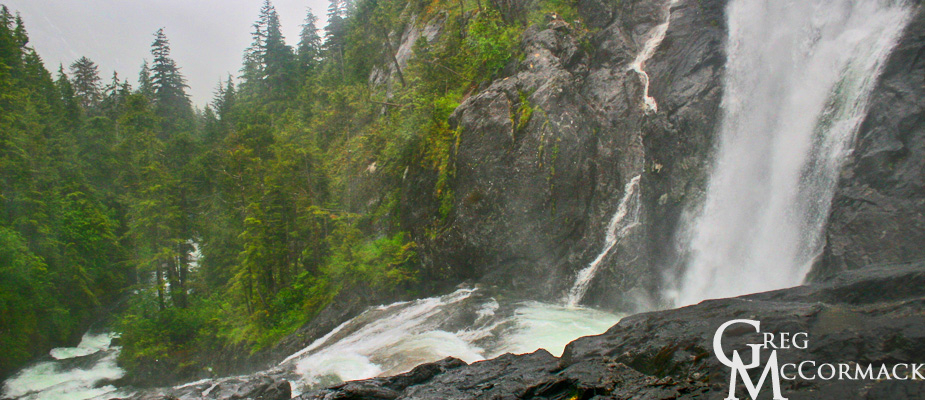
I have to yell “HEY BEAR” while pushing through the tall salmonberry shrubs, alder thickets and Devils’ Club plants to alert any sleeping grizzly bears. The guests follow me as I crawl under and on top of giant, fallen trees. We are sopping wet within 100 yards of penetration but all have big grins on their faces. Why? Because this is as good as it gets for pure wilderness! After we step over our first of at least 10 large piles of brown bear scat, I pronounce: “Welcome to the food chain!”
In the lower 48 States (or anyplace in the world for that matter), it’s easy to take trails for granted. It isn’t until we get into the path-less woods that we can appreciate all the effort it takes to build and maintain a trail. Four legged mammals have the advantage of ducking under massive fallen trees while looking for the least difficult way through an ecosystem to find food, water and shelter.
I shoot some video of our hiking group pushing through the wet vegetation and into the shallow river where it is easier to navigate.
In the late afternoon, our captain decides to motor into another of the spectacular fiords on the southeast side of Baranof.
The scenery is mesmerizing at just a few knots per hour and many are quiet and contemplative on our journey up to a waterfall and a view of a brown bear.
Monday | June 27th
September 9, 2011 by admin
Filed under InnerSea Discoveries
Klawock and Sea Otter Sound
We enjoy sunny skies as we disembark at the docks in Klawock and assemble on the pier for a walking tour. Les our guide tells stories his father told him about signs being put out in the streets that said: “No Dogs or Indians Allowed”. He went on to describe the beginning of the Alaska Native Brotherhood.
I drift into reverie and can’t help but think of the audacity of the first Europeans when they arrived in North America by asking the natives: “Where is your flag? You don’t have one? We claim this land for the Queen of England!”
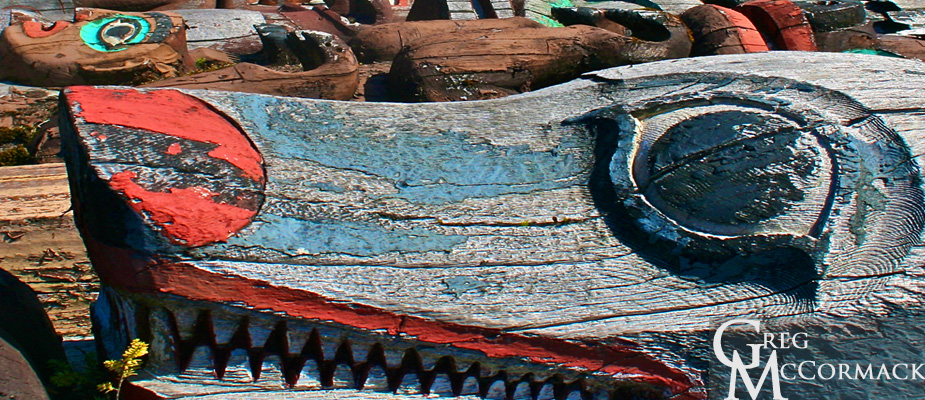
We approach the oldest cannery in Southeast Alaska and Les tells us about how thick the fish returns used to be. Behind the cannery about 2 miles away we can see a large paper/pulp mill. Les tells us that countless logs are shipped overseas from Prince of Wales Island to the Far East. Apparently, the mill is owned by the same family that runs the mill in my home-state of Washington at Port Townsend. 30 employees are employed at the POW site near Klawock.
For the birders in the group, we are entertained by the behavior and vocalizations of around two dozens species, the loudest of which is the song sparrow, orange-crowned warblers, winter wren and common raven. The call of the bald eagle “wowed” some folks. Film-makers in Hollywood seem to always play a recording of a red-shouldered hawk in place of the real eagle vocalization. Perhaps the real eagle call is un-regal?
The view of the river estuary with the backdrop of the snow-capped mountains was appreciated by all as we walked a mile to the carving shed from the totem park.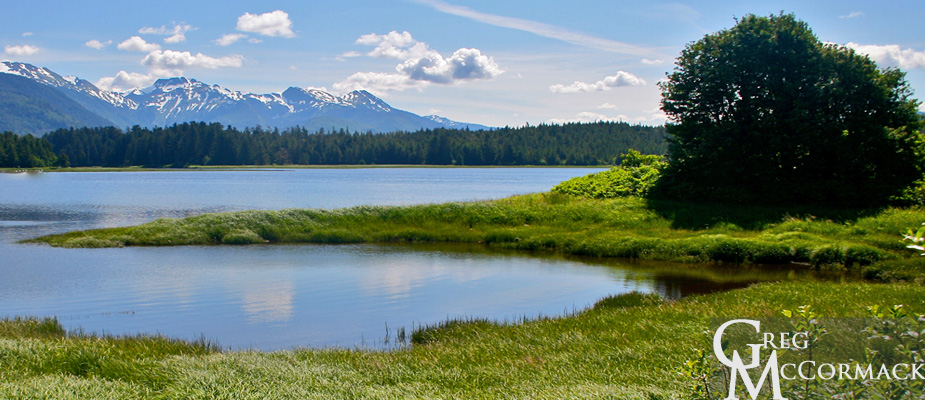
For those of us crew that make it here twice per month, we were amazed at how much progress has been made on the totems that will be erected in early August during a three-day festival. Accompanying Les is young apprentice James Mills, who has contributed his advanced carving skills to the community of Klawock. Everyone enjoys the carving shed where we meet Master Carver Jon Rowan Jr., the main carver of poles and overseer of the project. Sydney, niece of Les, has done a marvelous job of painting the totems, particularly the Naasteidi Flicker totem pole that has the red polka dots.
We get back underway at lunchtime and enjoy a mid-afternoon party on the Sun Deck. The central focus is our over-sized BBQ grill. Passengers and crew crowd around where we shuck and roast oysters that we picked-up yesterday from our oyster-farming friends in El Capitan Passage.
Captain Dano Quinn is busy on the bridge watching for whales but he enjoys the flavors of our shellfish with hot sauce!
Captain Dano surprises us later in the afternoon with an offering of small boat tours to a miniature archipelago of islands in Sea Otter Sound. The lighting for sunset is warm and perfect for pictures. As usual, a parade of interesting plankton flowed beneath the ship, including jellyfish and a pelagic mollusk.
Sunday | June 26th
September 9, 2011 by admin
Filed under InnerSea Discoveries
El Capitan Passage, Caves and Oyster Pick-up
I lead a couple of groups along the U.S. Forest Service trail to the caves. This is a great area to explain the hallmarks of a temperate rainforest, such as the presence of Sitka spruce, nurse logs, a profusion of mosses and ephiphytes, among others. We look at signs of a second growth forest such as trees of the same age and height class that grow so thick that sunlight cannot penetrate the canopy to reach the forest floor. The lack of sunlight leads to a paucity of herbaceous and shrubby plants that provide habitat or browse for herbivores such as deer.
It is obvious when we make the transition into an old growth forest. We notice lots of shrubs such as the false azalea, blueberry, and devils club along with ferns and their allies. Trees are of different age and height classes leading to a multi-layered canopy. Some of the trees are too large to hug with a diameter-at-breast-height or DBH of 30-inches. Nurse logs and snags are abundant, on the order of dozens per acre.
Old growth forests of several hundred years or more have a certain spacing between trees, perhaps 20 feet between each large tree, encompassing up to 400-600 trees per acre. In comparison, a second-growth forest will have several thousand trees per acre. Spacing is mere inches or only a few feet between each tree, leading to the lack of understory and little habitat for forest-dwellers. 95% of the forests in the lower-48 have been cut.
During the decades of the 60’s to 90’s, foresters bragged about more trees growing in America than at any point in our history. That is a true statement, but what is not mentioned is that the Department of Agriculture manages trees like crops and often have a mono-culture of single-species plots, leading to a much less bio-diverse ecosystem. Species such as the marbled murrelet and spotted owl were listed as threatened or endangered of extinction. Court injunctions followed and tough times for loggers because the industry saw it cheaper to ship raw logs and jobs overseas. Management strategies and forestry practices have changed for the better…
I spot a family of woodpeckers nesting in a large snag. The sapsuckers were busy flying to and fro to feed the noisy young inside of the tree. The sallying forth for arthropods such as flies and moths was entertaining as we rested to catch our breath about half-way up the 367 stairs.
At the El Capitan Caves, we are greeted by two National Forest Service rangers.
We learn about speleothems or stalactites and stalagmites and how they are formed. A graphic was passed around with the chemical equation for the process: Ca2 + 2HCO3 CO2 + CaCO3 + H2O.
A popular shot for photographers is the sign at the entrance to the caves. It reads: “EL CAPITAN CAVE. Danger! Hazardous conditions exist such as falling rocks, unstable footing, deep and sudden pits and sudden flooding. Cavers should be experienced and prepared with numerous light sources, technical climbing gear and survival gear.”

Our National Forest Service guides pass around some interesting photographs HERE
Saturday | June 25th
September 9, 2011 by admin
Filed under InnerSea Discoveries
We lift anchor at 0600 and motor a few nautical miles to Ketchikan for disembarkation at 0830. We bid a fond farewell to our old friends and shipmates. It has been a week-long voyage but when we recollect all of the memories, it seems as if we were together for a much longer period of time. We have experienced so much with all of our senses.

After a long and hard push to clean the ship from top to bottom, we wait for our new passenger friends and shipmates to board the M/V Wilderness Discoverer at 1630 hours.
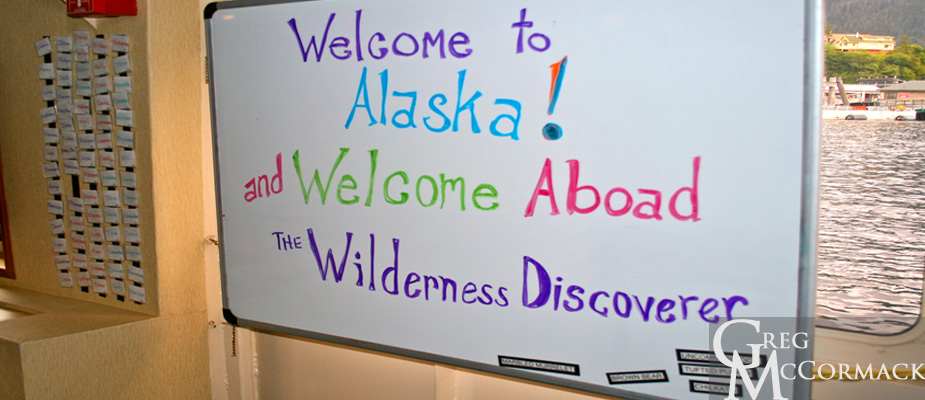
All of us take turns to show guests to their cabins. We meet folks in the lounge for appetizers and “welcome aboard” drinks.
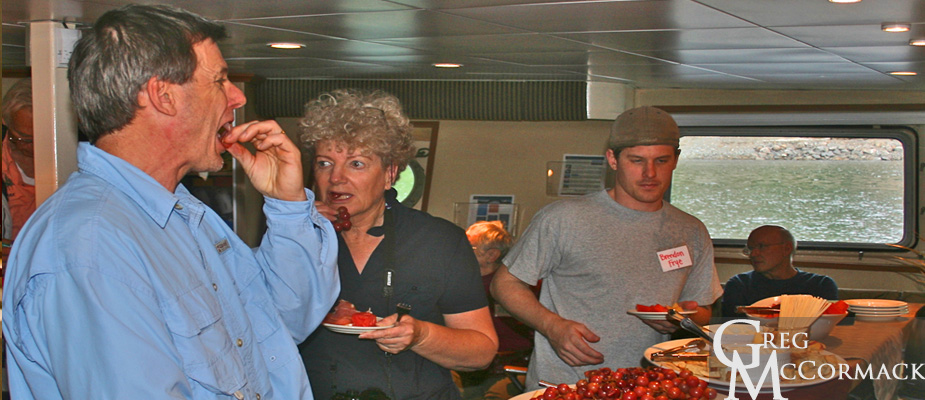
The captain, expedition leader, chief engineer and hotel manager each give a brief introduction to ship-living. We are on our way north up and around Prince of Wales Island.
This evening several of our guest passengers assemble in the lounge and play music. Friends are made rapidly and much merriment ensues.There are suggestions that our company buy some instruments for the vessels night entertainment, such as a Latin percussion box drum and a mid-level guitar, such as a Yamaha or “Ibanez”. Why not add tambourines, shakers with rice, recorders, etc?

Too much fun at night might lead to some weary adventure-seekers during the daytime, so let’s get some rest!


